'Shaheen Bagh is no longer a mere ghetto of lower middle class Muslims.'
'Now, it is a metaphor for resistance, secularism and struggle,' notes Md. Zeeshan Ahmad.
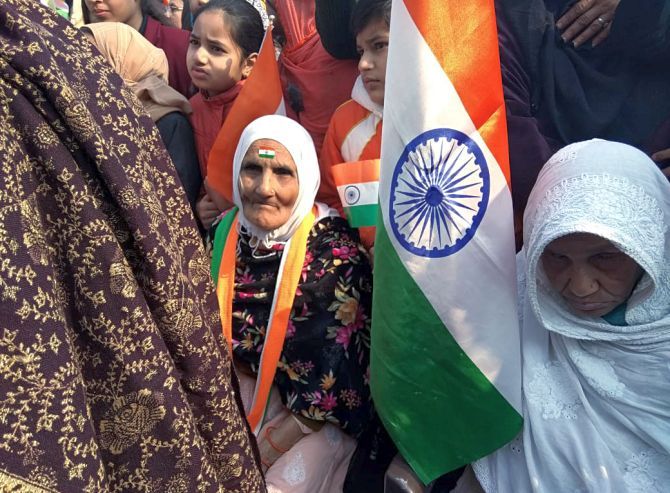
December 2019 in India, to borrow a phrase from Charles Dickens's A Tale of Two Cities, was indeed the 'winter of despair'.
The Citizenship (Amendment) Act, 2019, by giving religious premise to the secular citizenship law of India, attracted nationwide protests.
The State resorted to muzzle democratic protests, led mainly by youth, and more remarkably by women, mostly Muslims.
Shaheen Bagh: From a Protest to a Movement by Ziya Us Salam and Uzma Ausaf is a detailed chronicling of the alpha and omega of those protests, typified more prominently at Shaheen Bagh, a Muslim neighbourhood in New Delhi.
Ziya Us Salam and Uzam Ausaf, are seasoned journalists. Indeed, the authors's journalistic acumen and typical reporting style, gets reflected in the book.
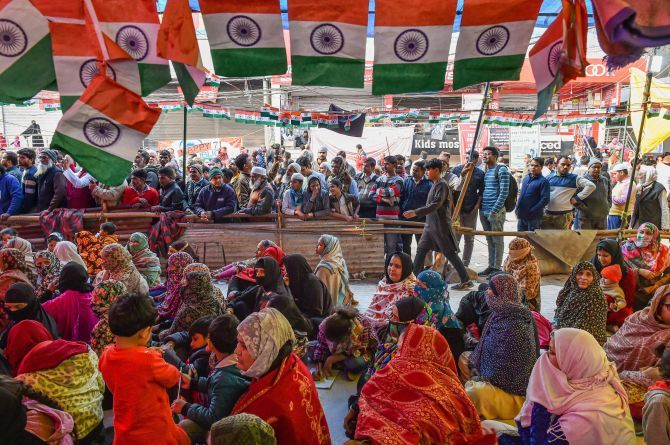
Shaheen Bagh is no longer a mere ghetto of lower middle class Muslims, also known for its non-vegetarian eateries.
Now, it is a metaphor for resistance, secularism and struggle, it 'became a pilgrimage centre of secular, inclusive India.'
The story of these protests could not have been possible without women.
A significant reason why the book under review should be read is that it details the saga of the intrepid women, 'They knew from the beginning that it was going to be a long haul. They were fighting for ... very existence.'
Arguably, with these protests, India's Muslim women have come of age.
Though the book under review does not delve deeper into it with an academic depth, it has quite beautifully written about how this transformation took place.
The authors write, '[in the] Shah Bano controversy [1986], there were more skull caps than hijab... during the Babri Masjid rallies and marches, there was a proliferation of bearded and skull-cap wearing men...'.
Now the women were in the lead.
The fighting spirit of these women could be wrapped in these lines of William Ernest Henley, Invictus:
Beyond this place of wrath and tears
Looms but the Horror of the shade,
And yet the menace of the years
Finds and shall find me unafraid.
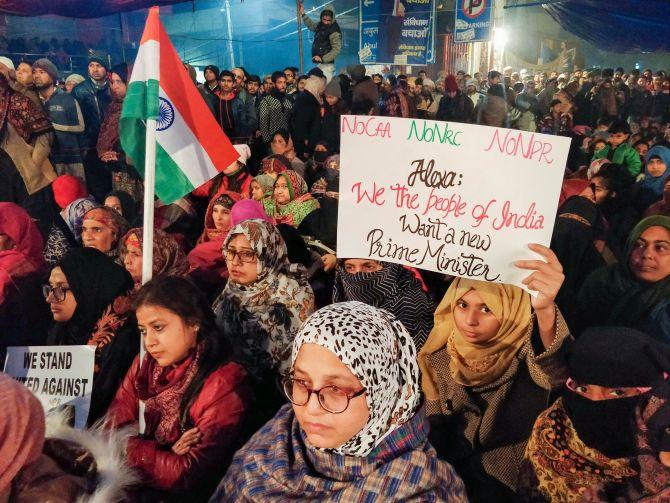
Journalistic writings serve many good purposes, particularly, of cataloguing.
However, the hastiness with which the book has been written, has left out the cataloguing of the brutal police excesses which were unleashed after mid December 2019 and continues even during the pandemic, mostly in UP and Karnataka, the two BJP ruled states, and in Delhi whose police is under the Union government of the BJP.
Various towns of western UP, particularly, Kanpur, Meerut, Muzaffarnagar, Sambhal, etc, bore the worst brunt of the police crackdown.
Many were killed too. Heavy penalties were imposed on the protestors without following the 'due process of law'.
Usually, movements are identified by a leadership face.
The Emergency (1975 to 1977) was associated with Jayaprakash Narayan, and the Kisan Baburao 'Anna' Hazare-led 'India Against Corruption' (2013).
However, the Shaheen Bagh and the allied protests across the country marked a departure from this pattern, 'it [was] completely [a] leaderless, faceless movement'.
One of the possible reasons for a longer sustenance of these protests was its non-affiliation with any political party or religious leader.
The BJP-led government clearly indicated their intentions, as this period marked a spate of violence and discrimination against Muslims: Lynching in the name of the cow, love jihad...
Yet, there was no protest by the Muslims.
The BJP, rather than taking this as a re-conciliatory overture, resorted to further oppression, exclusion and disenfranchisement of Muslims, via the CAA.
Deepening of Democracy
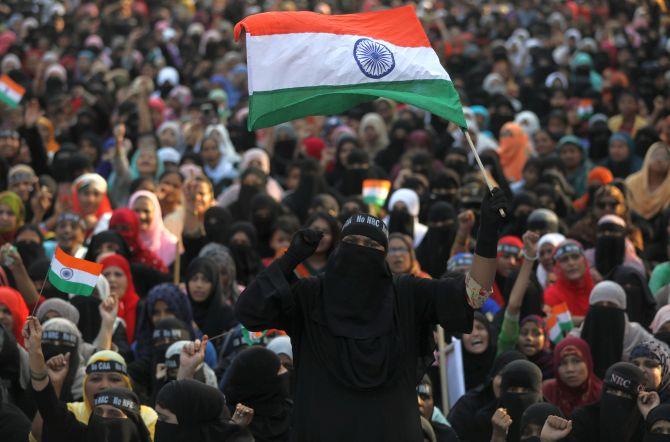
Even though the book under review provides some description of few protest-sites, away from Delhi, it glosses over the lesser known villages and small towns, where too, the women and deprived sections of people, valiantly led the protests.
One would expect some description of the class location and social composition of the leadership of these mofussil and rural protest sites.
Such a description could help understand the nature and potential of politics in the days to come.
On these sites too, equally articulate (in both English and regional languages) women leaderships were seen.
Video clips of such articulation were circulated on social media.
For instance, in Azad Basti (Jamshedpur, Jharkhand), in Muzaffarpur and Gaya (Bihar), in Shah Jamal (Aligarh), Lakhminiya (Begusarai, Bihar), etc, as also many such sites in southern and western Indian towns.
Also, these protests were significant, broadly for these reasons:
- It was perhaps for the first time that outside the campuses, a systematic and sustained protest took place.
- The women chiselled and honed their leadership skills.
- It would hopefully help in deepening of democracy in the hinterlands as a new social class emerged who politicised themselves and became more conscious about their political rights.
Institutions in a Constitutional Democracy
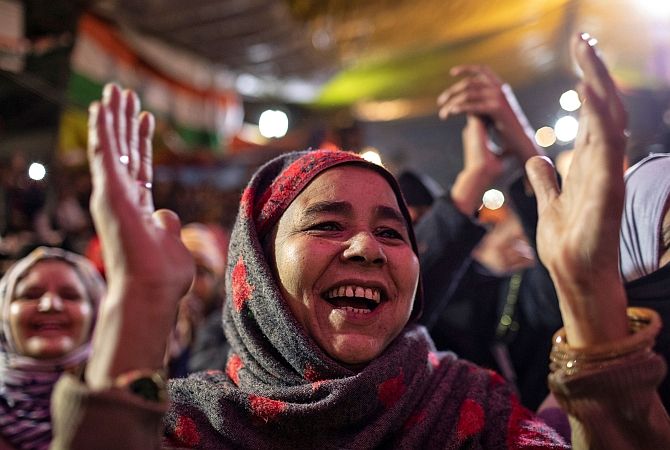
One of the tragedies of independent India has been that it never worked upon its colonially inherited democratic institutions.
Over the years, it therefore just kept on degenerating.
The erosion of institutions didn't take place overnight.
The authors say, 'Most institutions stood compromised, personnel in positions of authority were rewarded not for uprightness but pusillanimity...'.
These are just a few among many symptoms.
Taking a closer look at the institutional crises, K G Kannibaran in his The Wages of Impunity (2003), writes: '...the court was at pains to point out that on the midnight of 26 January 1950, no new institutions arose, that old institutions were continued with a slight renaming.... This is perhaps the only country whose government at the commencement of its independent existence was lawfully and not politically established.'
Institutions just don't protect the Constitution; these also act as the facilitators of Constitutional goals.
As Ornit Shani argues in her book How India Became Democracy (2017), 'the institutionalisation of democratic citizenship in India at its inception became ... a key to democracy's survival in the face of its enduring shortfalls and many unfulfilled constitutional promises.'
The book under review has few omissions/limitations too, besides its meticulous reporting and incisive analysis of the unfolding of the protest:
The authors haven't expended much space in examining and explaining the implications of the CAA-NPR-NRIC.
That the CAA is a 'black law' which 'disenfranchises Muslims', is indeed true, but this explanation is just the tip of an iceberg. There is more to the CAA. This issue is so grave that the UN Human Rights Commission described it to be 'fundamentally discriminatory'.
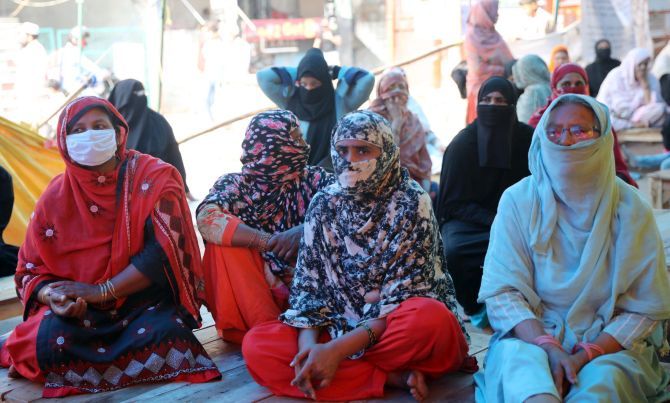
The CAA basically provides fast-track citizenship, by way of naturalisation, to non-Muslim migrants who face 'religious persecution' in their native countries.
The privileging of those Hindus, Zoroastarians, Sikhs, Christians, Buddhists and Jains being religiously persecuted in Afghanistan, Pakistan and Bangladesh -- over Muslims -- and excluding them from the list, is a clear act of 'othering' and disenfranchising Muslims.
For instance, Ahmadiyas and Shias persecuted in Pakistan, and Rohingya persecuted in Myanmar, Muslims persecuted in Nepal and Sri Lanka cannot qualify for citizenship in India.
Also, what the yardstick would be to measure 'religious persecution' is left unexplained in the CAA.
Rohit De et al, therefore comment, '....justification that the CAA offers protection to people facing religious persecution in neighbouring countries, is specious.'
The CAA, a faith-based citizenship law, is therefore anti-thethical to the core of the Constitution, against the grain of Secularism, a part of the basic structure, which cannot be amended (S R Bommai, 1994).
The contradiction doesn't stop here.
The CAA is even arbitrary in the sense that it is devoid of reasonability in regard to the classification made in law (Ali Anwar Sarkar, 1954).
Be it the whimsical selection of three countries and six communities, or the blatant exclusion of the Muslims.
Pursuant to the Assam Accord (1985) between the central government and the regional parties, in order to purge illegal Bangladeshi immigrants, a fresh National Register for Indian Citizens (NRIC) was to be conducted.
Losing documents owing to continuous floods, coupled with the bureaucracy's red tapism, plus, clerical mistakes, rendered many as doubtful - 'D'-- voters.
As said, citizenship is a 'bundle of rights'.
Not just voting rights, a host of other rights -- ration cards, owning property, getting a passport, etc -- are all determined by one's citizenship.
To put it simply, many social, political and economic rights are impending on the citizenship status.
It appears that the govevrnment is hell bent on cutting this umbilical cord -- the citizenship status -- and rendering a particular section vulnerable.
The nefarious objective of the NRIC and CAA were as follows: NRIC disenfranchises (mostly disadvantaged groups who are more likely to lack documents) and the CAA comes as a safety net to protect all, except Muslims.
Hazards of graded citizenship: Myanmar and Israel
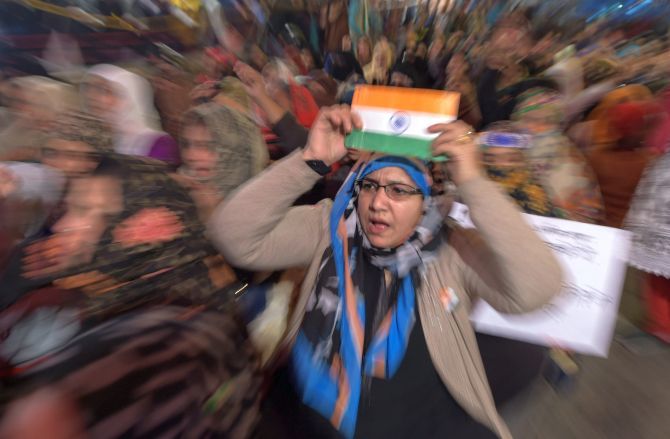
The Citizenship Act 1955 chose the principle of jus soli, birth-based citizenship over jus sanguinie, citizenship based on descent.
This notion of citizenship was not constricted rather it was universal, pluralistic and secular in sense.
Juxtaposition of the CAA with the lived experience of Rohingya Muslims in Myanmar, who were termed as 'one of the most persecuted minorities in the world', by the UN (2013), gives a clear picture as to which path India has now charted for its minorities (read Muslims).
The CAA effectively creates an institutionalised hierarchical system of citizenship that is predicated on an individual's religion.
This reminds one of Myanmar's 1982 Citizenship Law, which privileges citizenship for 'indigenous races', and excludes the Rohingyas.
This ethnic discrimination paved the ground for genocidal violence against the Rohingya.
Equally discriminating is Israel's Law of Return, 1952, which is based purely on ethnicity (Israel for Jews) and discriminates against the Palestinians solely for their religion.
The Palestinians have been reduced to second class citizens.
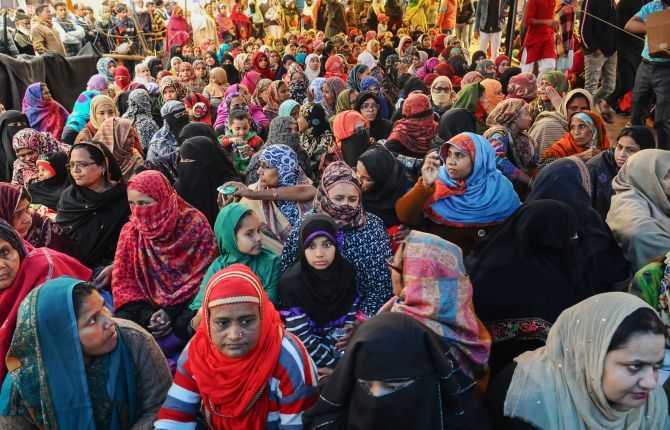
At the Shaheen Bagh protests and even other similar protests, those who talked divisively or chanted religious slogans (read over-assertion of religious identity) were outrightly rejected.
This aspect does not find a mention in the book under review (see, for instance, Hayaat Fatemah, 'Slogans like 'La Ilaha IlAllah' narrow the scope of anti-CAA protests,' The Indian Express, January 13, 2020).
Dalit and Bahujan leaderships, in their localities didn't mobilise for sustained agitation in solidarity with the Shaheen Baghs of India.
This is in stark contrast to the protest of April 1, 2018, which they registered when the SC/ST Act 1989 was diluted by the government (Suresh Mahajan vs Union of India, 2018).
Does it indicate that good numbers of Dalits have been saffronised in anti-Muslim hatred? This aspect remains unexamined in the book.
The Struggle Should Continue?
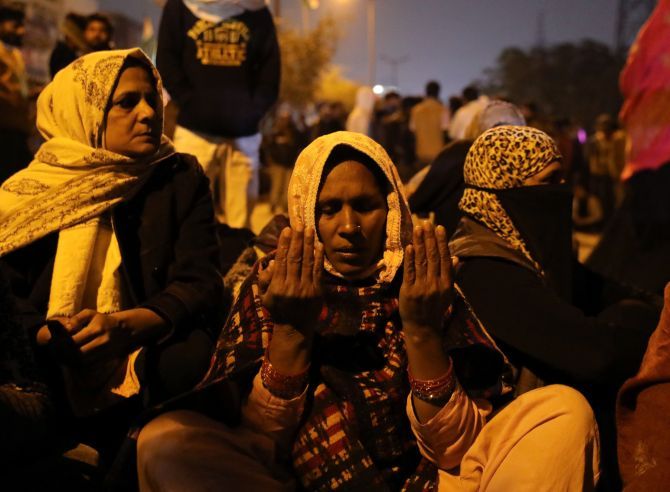
The book under review seems to make a case that the Shaheen Bagh protests and many like it, were battlegrounds, where the Idea of India is being contested.
This battle was, as the authors write, 'for the protection of the soul of India'.
Sunil Khilnani writes (1997), the 'Idea of India is not homogenous and univocal.'
'In fact, no single idea can possibly hope to capture the many energies, angers, and hopes of one billion Indians; India's diversity, to give voice to differing interests ....has [thus far] saved India from the civil conflict...'
The Shaheen Bagh protests across India's villages and towns were a battle for the Idea of India, a bid to save its Constitution!
Md. Zeeshan Ahmad is a law student at Aligarh Muslim University.
Feature Presentation: Aslam Hunani/Rediff.com



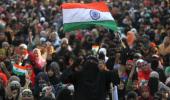
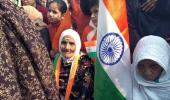



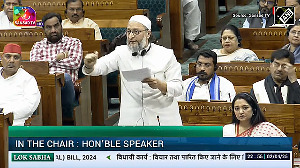
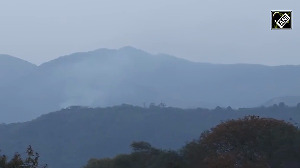

 © 2025
© 2025